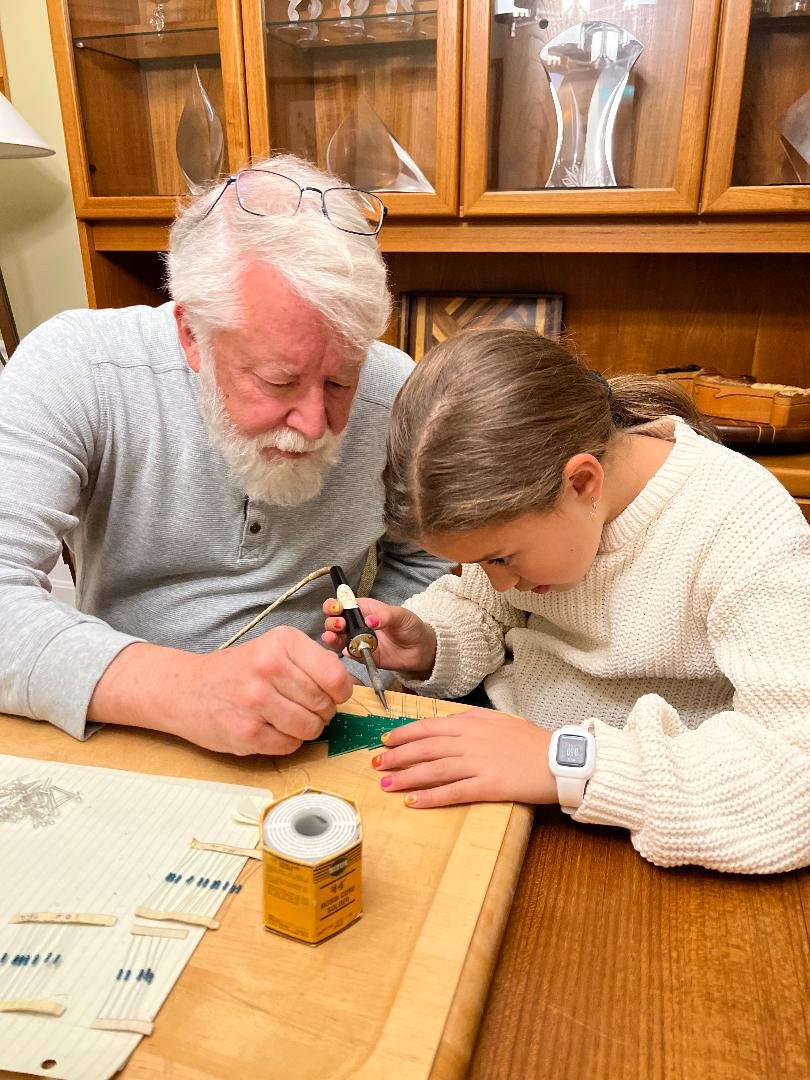Endorsement from Jay Simpson
Jay Simpson, PhD is a Ceramic Engineer from Rutgers University. He is a Distinguished Member of Technical Staff, Bell Laboratories, Director of Photonics, Ciena Corporation, and a Career Intelligence Medal recipient.
March 14, 2024 Jay Simpson
To whom it may concern:
I am pleased to provide my full endorsement for the BUILD program proposed by Dr. Jerry Branson. Drawing upon my experiences at Bell Labs, an environment that thrived on the principles of experimentation, collaboration, and innovation, I believe the BUILD program shares many of the attributes. Dr. Branson's observations while teaching and working with today’s students has exposed an urgent need for a renewal of technical education process in the United States. The proposed initiative, which centers around interdisciplinary collaboration and hands-on learning, is particularly appropriate for the needs of the United States to remain technically competitive.
I have a deep appreciation for the impact and rigor of this proposal. Dr. Branson’s hands-on approach in creating innovations fuels manufacturing and the required collaborative steps. The success of the process depends highly on the type and quality of the education and attitudes of the personnel employed. Needs and tools within the technical and scientific community evolve and so must teaching methods. There are more tools today than ever before to support the BUILD process and the time is right to make these tools a part of today’s education.
Every day at Bell Labs was dedicated to building, measuring, or analyzing data from experiments. The culture at Bell Labs fostered a laboratory approach to both basic research and manufacturing methods. Whether we were making discoveries for the first time or supporting Western Electric manufacturing, the results were overwhelmingly positive. Three key aspects stood out in the Bell Labs environment:
1. Unprecedented Support for Laboratory Approach: Support for the laboratory approach was unparalleled. We had access to numerous stockrooms with a vast array of components, chemicals, metal stock and specialized equipment—all available with little to no managerial approval required. Highly skilled machinists, glass blowers and opticians were on hand for complex builds, creating an environment where experimentation was not just encouraged but expected.
2. Easy Collaboration with Experts: Collaboration with experts from various fields was seamless. Knocking on someone's doorto discuss ideas and seek assistance was the norm. The collaborative spirit extended to diverse working families where individuals aimed to showcase success through technical memos, talks, patents or journal articles. Extended lunch discussions were common, also, fostering an environment of shared knowledge and camaraderie.
3. Management Understanding and Support: Management at Bell Labs consisted mostly of former staff members who understood the importance of experimentation and rarely interfered. This understanding allowed the minds of researchers to explore, create, and collaborate freely. The Bell Labs environment set minds free to explore and create, leading to breakthroughs that justified the investment in this unique facility. Several breakthroughs and Nobel Prizes affirmed the value of this laboratory approach. In today's technical landscape, the BUILD program's embrace of a similar laboratory approach holds immense promise. By creating an environment where experimentation, collaboration and innovation are actively encouraged, the BUILD program can serve as a catalyst for breakthroughs, echoing the success witnessed at Bell Labs.
The value of making accumulates knowledge that answers fundamental questions. It not only tests our understanding but provides insights into the feasibility of ideas. The BUILD program's commitment to hands-on experience aligns with this philosophy, and I am confident that it will to contribute significantly to technological advancements and, in turn, strengthen the United States’ position on the global stage.
Designing high tech products for manufacturing requires not only an excellent academic footing but a host of technically diverse solutions that ultimately create the end process. Discovery of issues both perceived and real early on in the process are crucial. One of the key strengths of this proposalis its emphasis on practical hands-on learning. There is no substitute for doing and seeing it done. The long used methods of first making a bread-board prototype followed by a more refined brass-board and on to the final product has been shown to be the best approach for years. No one sees all of the issues at the initial concept phase. Exposing students to this reality prepares them for the real-world. Embracing failure along the way is also critical. Changing the negative concept of “to fail” to a positive first attempt in-learning is critical. Learning from books alone will ill prepare these students. It is this ill prepared outcome that Dr. Branson and others of us have noticed in several recently graduated students. They need to accept the messy, iterative process of discovery. Building an understanding of this process prior to employment not after, is imperative.
I wholeheartedly endorse the BUILD approach and believe it will better equip students with the necessary skills to succeed in the rapidly evolving technological landscape.
Best regards,
Jay Simpson

